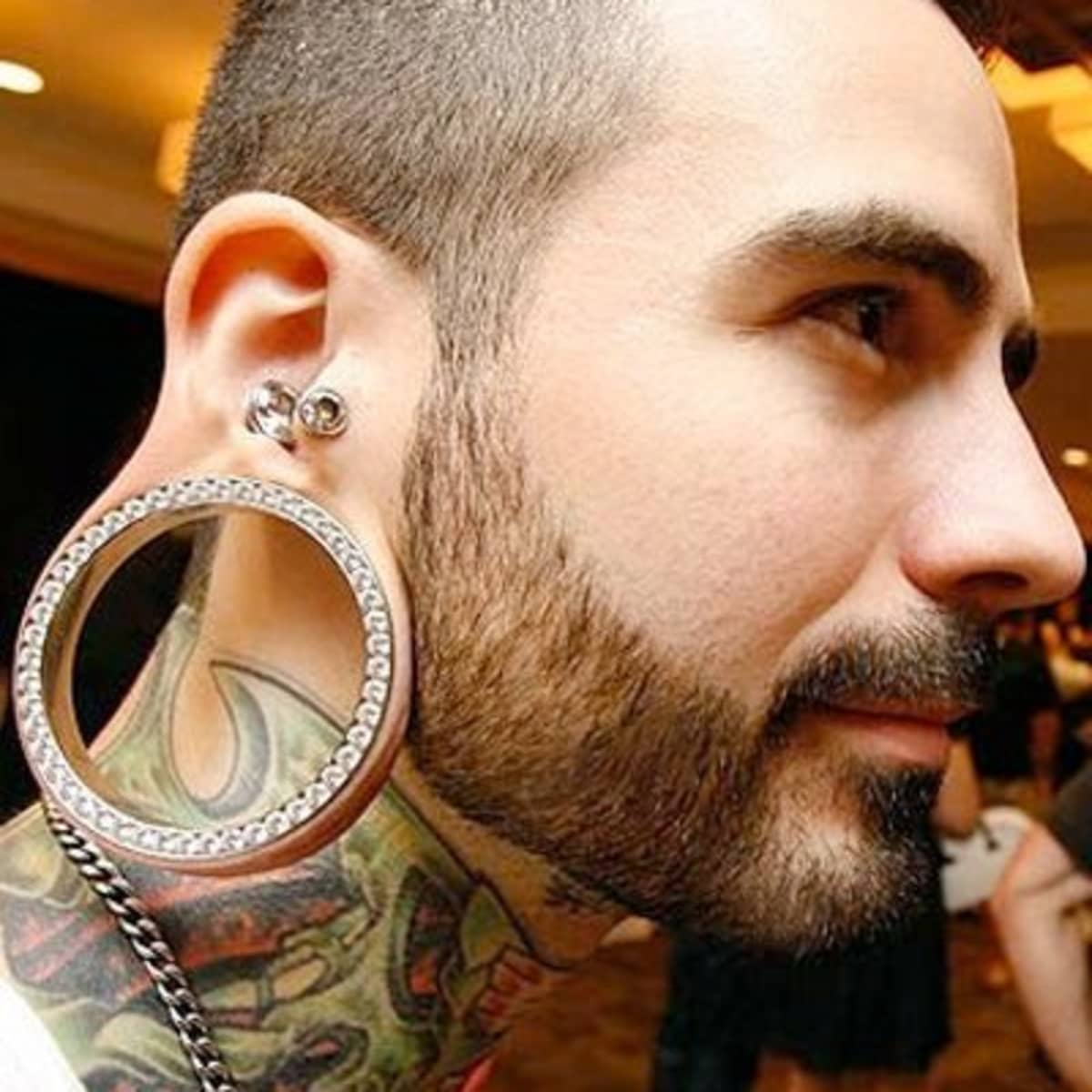Understanding the Journey of Ear Stretching
Ear stretching and gauging is a pretty cool form of body art that mixes cultural significance with modern style. This guide covers everything from gauge sizes to aftercare, offering valuable insights for beginners and experienced enthusiasts.
Introduction to Ear Stretching:

Ear stretching, also known as gauging, is a body modification practice that gradually expands the size of an existing ear piercing to accommodate larger jewelry. This process has deep historical roots in various cultures and has gained popularity in modern times as a unique form of self-expression. Ear stretching allows individuals to adorn their ears with a variety of plugs, tunnels, and other ornamental jewelry, showcasing their style and creativity.
Historical and Cultural Significance:
The practice of ear stretching dates back thousands of years and holds significant cultural meaning in various societies. Indigenous tribes in Africa, South America, and Asia have long used ear stretching as a rite of passage, a symbol of status, or a spiritual practice. Today, this ancient tradition continues to influence modern body modification, blending cultural heritage with contemporary aesthetics.
The Stretching Process:

The journey of ear stretching begins with a standard ear piercing, typically at a gauge size of 18 or 20. Over time, individuals gradually increase the size of their piercings by inserting progressively larger jewelry. The stretching process should be approached with patience and care to avoid damage to the earlobe. Typically, increments of 1 to 2-gauge sizes at a time are recommended, with a waiting period of several weeks to months between stretches to allow the tissue to heal and adapt.
Gauge Sizes and Jewelry:
Understanding gauge sizes is crucial for anyone considering ear stretching. The gauge system measures the thickness of the jewelry, with smaller numbers indicating larger diameters. For example, a 16-gauge piercing is smaller than a 0-gauge piercing. Once the desired size is reached, a wide variety of jewelry options become available, including plugs, tunnels, and hangers made from materials like surgical steel, glass, wood, and silicone.
Stretching Techniques and Tools:
Various tools and techniques can aid in the stretching process. Tapers, which are cone-shaped tools, are commonly used to enlarge the piercing gradually. Alternatively, individuals can use bondage tape or PTFE tape, wrapping it around existing jewelry to incrementally increase the size. Regardless of the method, it is important to prioritize hygiene and proper aftercare to prevent infections and promote healthy stretching.
Aftercare and Maintenance:
Proper aftercare is essential for the health and longevity of stretched piercings. Regular cleaning with saline solution, gentle massage with vitamin E oil, and avoiding harsh chemicals are key steps in maintaining healthy, stretched ears. Additionally, individuals should be mindful of their jewelry choices, opting for high-quality, hypoallergenic materials to minimize the risk of irritation or allergic reactions.
Potential Risks and Considerations:
While ear stretching is generally safe when done correctly, there are potential risks to be aware of. Overstretching or stretching too quickly can lead to complications such as blowouts, infections, or tearing of the earlobe. Consulting with a professional piercer and adhering to recommended guidelines can help mitigate these risks and ensure a successful stretching journey.
Personal Stories and Experiences
Many individuals who engage in ear stretching find it to be a rewarding and meaningful form of self-expression. Personal stories and experiences from the body modification community highlight the diverse motivations and outcomes associated with ear stretching. Whether for aesthetic reasons, cultural connections, or personal milestones, ear stretching remains a powerful and personal journey for many.



